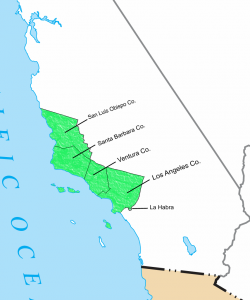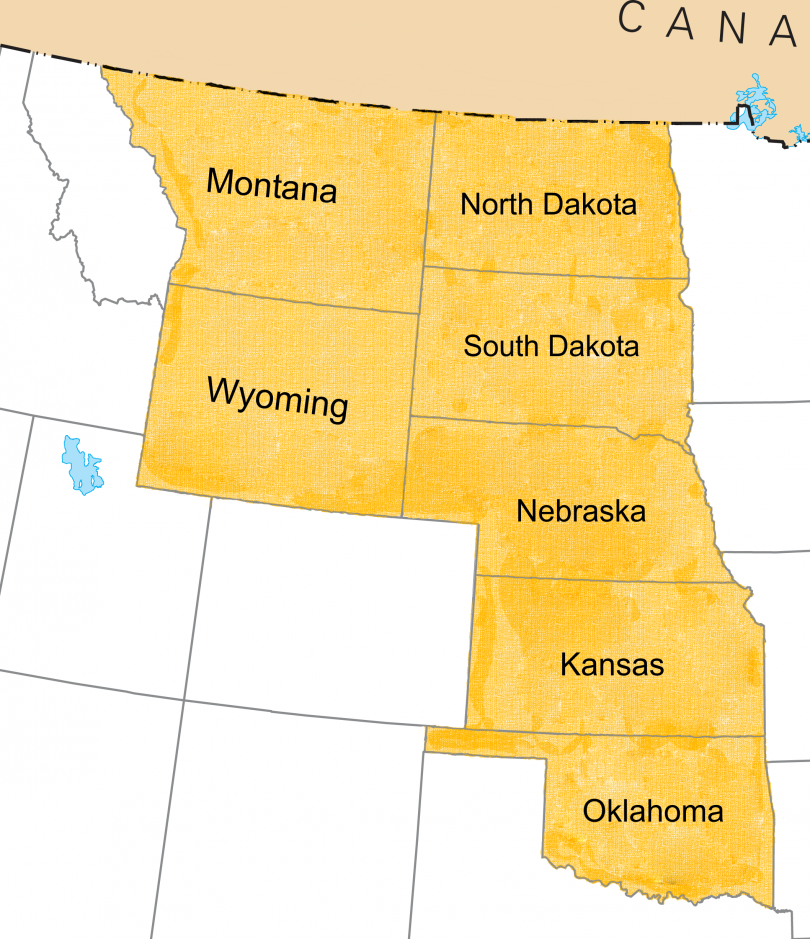aNewDomain – If elected Donald Trump plans to deport all of America’s 11.4 million undocumented aliens. Numbers can be difficult to visualize.
So, here are three ways to view 11.4 million people – 1) as a single U.S. state, 2) as a contiguous series of smaller states and, 3) as a single urban area.
Visualizing the U.S.’s undocumented population not only raises obvious questions about the country’s immigration problems – it also raises some serious questions about representative democracy.
As discussed below, one group of 11.4 million Americans are represented exclusively by 12 U.S. senators, another group of 11.4 million Americans get 2 U.S. senators and a final group of 11.4 million Americans get no U.S. senators to call their own.
That hardly seems fair … and maybe makes us less than we could be. But I digress.
So, what exactly do 11.4 million people look like in terms of contiguous portions of the U.S.?
No one U.S. state has a population of 11,400,000. But Ohio is close.
11.4 Million — All of Ohio But One County
 Ohio has a population of 11,613,423, according to the 2015 census estimate. Turnbull County in eastern Ohio has a population of roughly 210,312. Ohio minus Turnbull County yields 11,403,111.
Ohio has a population of 11,613,423, according to the 2015 census estimate. Turnbull County in eastern Ohio has a population of roughly 210,312. Ohio minus Turnbull County yields 11,403,111.
So, removing 11.4 million undocumented aliens is the equivalent of removing the entire population of Ohio except for Turnbull County, shown in green on the adjoining map.
Ohio is the 7th largest U.S. state.
Picture Ohio with everyone gone except for the good folks of Turnbull County. Surely that would be easy enough to do, to remove the population of the entire state more or less, and probably wouldn’t cost much, right?
11.4 Million — Depopulating the Plains States
 How about removing an entire region of the U.S.? Let’s consider a collection of Plains States or a hefty swatch of them.
How about removing an entire region of the U.S.? Let’s consider a collection of Plains States or a hefty swatch of them.
The combined populations of Oklahoma (3,911,338), Kansas (2,911,641), Nebraska (1,896,190), South Dakota (858,469), North Dakota (756,927) and Wyoming (586,107) amount to 10,920,672, according to the 2015 census estimate.
This number could be bumped up to 11.4 million by adding counties of neighboring states. For example, the counties in the eastern and central portions of Montana supply enough folks to reach the magic number right up to the line drawn through Montana in the map above.
Of course, Trump will only deport the “illegals,” right? Well, he’s kind of flippant, what if he changes his mind about who needs to go?
Anyway, removing 11.4 million people is the equivalent of depopulating the Plains States. Well, we put a man on the moon. Surely this will be child’s play. After all, the Nazis moved millions, right?
Is there a densely populated urban area that holds 11.4 million people?
Removing 11.4 Million From an Urban Area
 We could take New York City and add a few outlying areas to reach the target number, for example. Adding Los Angeles County to Orange County yields way more than 11.4 million people.
We could take New York City and add a few outlying areas to reach the target number, for example. Adding Los Angeles County to Orange County yields way more than 11.4 million people.
But adding Los Angeles County’s 9,878,554 souls to the more sparsely populated counties to its north (Ventura, Santa Barbara and San Luis Obispo) yields 11,343,551. Add in the Orange County city of La Habra, and we hit 11,403,668.
In fact, this number matches the Ohio number almost perfectly, and isn’t far off from the Plains States number.
No doubt ejecting that many people from the U.S. will be a “piece of cake.”
Of course, those pesky undocumented aliens have spread themselves out through the whole of the U.S. So, the round-up squads won’t be able to find them in just one place. And they might not fit comfortable stereotypes. Some of them might even be from places like Ireland or Korea.
But don’t worry … we’ll all be so happy once those party crashers are gone.
Time to Update the Constitution?
Article I, Section 3 of the U.S. Constitution gives each state two senators. As we learned in high school civics, this was supposed to be a wise compromise with the composition of the House whose members are based on population.
But the compromise wasn’t necessarily popular with everyone when enacted. Alexander Hamilton hated it and wrote in Federalist No. 22:
Every idea of proportion and every rule of fair representation conspire to condemn a principle, which gives to Rhode Island an equal weight in the scale of power with Massachusetts, or Connecticut, or New York; and to Delaware an equal voice in the national deliberations with Pennsylvania, or Virginia, or North Carolina. Its operation contradicts the fundamental maxim of republican government, which requires that the sense of the majority should prevail.”
In 1790, the largest U.S. state by population was Virginia at 691,937. The smallest state was Delaware at 59,096. So, the largest state’s population was nearly 12 times larger than the smallest state’s population. If you consider the number of free white males (i.e., the folks who could vote back then) the ratio was only about 6-to-1.
What are the numbers today?
The 2015 census estimate has California as the largest state at 39,144,818 people and Wyoming as the smallest state at 586,107 — that’s a ratio of almost 67-to-1.
So, California gets two senators and Wyoming gets equal representation in the Senate.
Equity? I don’t think so.
The Plains States group of 11.4 million Americans are represented exclusively by 12 U.S. senators (11 Republicans, 1 Democrat). The Ohio group of 11.4 million Americans are represented by 2 U.S. senators (1 Republican, 1 Democrat). The Los Angeles region of 11.4 million Americans are not represented exclusively by any U.S. senators.
Those 11 Republican senators from the Plains States represent 20 percent of the Republicans in the U.S. Senate. Just sayin’.
The Plains States, collectively, and Ohio are represented by 16 U.S. House Representatives, while the urban Los Angeles area is represented by 15 House Representatives.
If you already knew that the most urban, wealthiest areas of the country were the least represented in the federal government, then congratulations!
I have profound respect for the wisdom of the Founding Fathers.
But could they have really guessed nearly 250 years ago that eventually half the population would reside in a mere 8 states (California, Texas, Florida, New York, Illinois, Pennsylvania, Ohio and Georgia) with the other 42 states comprising the rest of the population? Could have they guessed that there would also be a partisan imbalance between these areas, too?
Fixing this gross imbalance would be far easier and cheaper than deporting 11.4 million people, most of whom are employed in jobs that the rest of the country doesn’t want.
For aNewDomain, I’m Tom Ewing.
Maps prepared by Tom Ewing from a U.S. Geological Survey map in the public domain.













